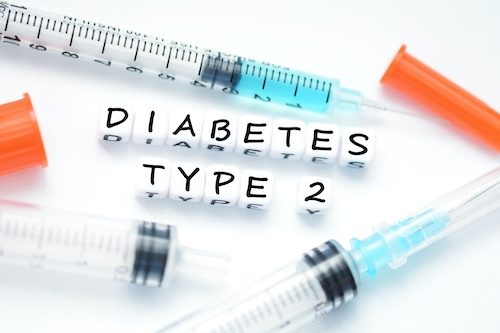What Is the Difference Between Type 1 and Type 2 Diabetes?
Category: Healthy Living
Author Vanessa
Posted on January 29, 2021
Vanessa is a health writer and blogging expert. Her specialities are medicine, health and wellness. She is proud to call Vancouver, BC her home where she enjoys the ocean and mountains with her dog Mr. ChowChow.

Did you know that, according to the CDC, 34.2 million Americans have diabetes? That’s 1 in 10 Americans who have diabetes. Additionally, 1 in 3 American adults has prediabetes.
If you’re one of these Americans who has diabetes or prediabetes—or you have a child who has either of these conditions—then you need to know the difference between Type 1 and Type 2 diabetes.
You might be asking yourself questions such as:
“What causes Type 1 and Type 2 diabetes? Is it the same thing?”
“What is the difference between Type 1 and Type 2 diabetes?”
“Are Type 1 and Type 2 diabetes treated differently?”
“How do I know if I have Type 1 or Type 2 diabetes?”
Like with anything related to health, having so many questions can be stressful since your wellbeing is at stake. You might also be frustrated and worried that, with all the research you’re doing online, you’re losing precious time that could go into dealing with diabetes.
That’s why we’ve put together this guide. By helping you understand Type 1 and Type 2 diabetes, you can get the answers you need to focus on your health. Read on to learn more.
The Main Difference Between Type 1 and Type 2 Diabetes
While there are many differences when it comes to Type 1 vs Type 2 diabetes, there is one main difference. When the body experiences Type 1 diabetes, it stops producing insulin. Because insulin is necessary for everyday function and survival, people with Type 2 diabetes need to take insulin injections.
When the body experiences Type 2 diabetes, the body is producing insulin, but cells within the body are not responding to the insulin when it’s present. The fancy term for this is insulin resistance. When insulin resistance occurs, what should happen is that the pancreas makes more insulin to make up for its lack.
Type 2 diabetes is defined by these two things occurring: cells not responding to the insulin and the pancreas not making more of it.
Who is Affected
The next difference is who is affected by Type 1 and Type 2 diabetes. Generally speaking, Type 1 diabetes first appears in childhood or during young adulthood. For this reason, it used to be referred to as juvenile-onset diabetes.
However, Type 1 diabetes can have its onset at any age. It is now defined not by when it first appears, but instead by what occurs within the body: that it stops producing insulin.
Type 2 diabetes usually occurs later in life. Those most affected are people who have a family history of diabetes, who are overweight, or who are over forty years old. However, Type 2 diabetes is on the rise in adolescents, too.
Each Type Within the Body
In order to understand what happens within the body when it has diabetes, it’s important to know how insulin works within our bodies to help it function. Generally speaking, insulin is related to the way we break down the food we consume for energy.
If it isn’t present, then we aren’t able to use this energy, which causes a variety of health issues, depending on what type of diabetes you have. Here’s the breakdown of how we use insulin.
How We Use Insulin
Glucose, also known as blood sugar, is the main source of energy for our bodies. It comes from the food we consume, mostly from carbohydrates but also from sources of protein. When your body’s doing what it should do, food sources are broken down into glucose, which makes it possible for the energy to spread through and feed different parts of our body.
When it spread through our body, it’s broken down in the intestine, then goes to our liver, which then puts it into our bloodstream, a system that can reach all the other parts of our body. When it reaches its final destination of a cell, the insulin part of the cell acts like a door that lets the glucose in.
You can see how, with both types of diabetes, not having the insulin you need to open the cell door is a problem. Your cells starve without insulin present. Both types of diabetes also cause the amount of insulin in your blood to be too high, which can have devastating effects. Let’s now review what these effects are for each type of diabetes.
Effects of Type 1 Diabetes
With Type 1 diabetes, the lack of insulin entering your cells causes an issue with the beta cells in your body. Before we explain this, it’s important to understand how beta cells work. Beta cells, in a healthy body, are designed to create insulin within the pancreas when insulin in the body is low.
When you have Type 1 Diabetes, your body starts destroying its own beta cells. Your immune system does this as a response to there being so much glucose in your bloodstream. This creates the problem that there are fewer and fewer beta cells that create the insulin you need. If there’s less insulin, then the amount of glucose in your bloodstream gets even higher.
It’s a vicious cycle, basically. As you have higher glucose in your bloodstream, your body sees this as a sign that you’re getting the glucose into your cells, even though you aren’t. So they shut down processes that help you get the glucose into your cells, such as the creation of the beta cells that produce insulin.
Effects of Type 2 Diabetes
When it comes to Type 2 diabetes, it’s a similar situation but not exactly the same. Your body is producing insulin, which is different than Type 1 diabetes, where your body isn’t producing insulin or the beta cells that produce it.
The problem in Type 2 diabetes is the insulin doors in your cells. They don’t unlock to let in the glucose, which causes the blood glucose levels to rise within your body.
Risk Factors
When it comes to risk factors for getting diabetes, these are different if you’re looking at Type 1 or Type 2 diabetes. There’s no one root cause of diabetes, but some of these factors can give you an idea of whether you’re at risk or why you now have diabetes.
With Type 1 diabetes, risk factors are lesser-known. This is because Type 1 usually occurs early in development, so there’s less you can to avoid getting Type 1 diabetes. With Type 2 diabetes, there are known risk factors. These include:
- If there’s a history of diabetes in your family
- If you’re obese or overweight
- What age you are (it’s more common as you get older)
- Your ethnic background
- If you’re a smoker
If you’re looking at this list and see that they apply to you, there are ways you can change your lifestyle in order to avoid developing diabetes. These include maintaining a healthy weight, being active, eating healthy, and quitting smoking if you’re a smoker.
When it comes to age and ethnic background, you’re more likely to get diabetes if you’re over 40 years old or South Asian. However, because of the rise of obesity in the US, more and more young people are developing Type 2 diabetes at an early age.
The Symptoms
The symptoms of Type 1 and Type 2 diabetes can also vary. While they have many symptoms in common, there are some that occur in each type. Generally speaking, symptoms that occur with both types of diabetes include:
- Blurry vision
- Longer healing time for cuts and wounds
- Yeast infections or genital itchiness
- Losing weight without the effort of losing weight
- Fatigue (more than usual)
- Feeling thirsty very often
- Having to use the bathroom often, especially at night when the need to use the bathroom wakes you up and forces you out of bed
If you experience any of these symptoms, then chances are you have Type 1 or Type 2 diabetes. However, there a difference between these two: how quickly your symptoms appear. When it comes to Type 1 diabetes, they all appear immediately, making it easy to diagnose.
Keep in mind that if you notice these symptoms, you should see your doctor immediately about getting insulin you can use to avoid high blood sugar in your bloodstream. Otherwise, you may experience diabetic ketoacidosis.
With Type 2 diabetes, these symptoms appear more slowly and not all at once. Therefore, it can be trickier to know if you have Type 2 diabetes. That’s why it’s important for you to review the last section and be aware if you’re at risk.
If any of the risk factors are present in your life and you experience even just one of the symptoms of diabetes, we recommend going to your doctor. If you aren’t sure, then you should go to your doctor in case. If diabetes goes unchecked, it can cause serious health problems.
Different Treatments
While there isn’t a cure for diabetes, there are many management strategies and treatments that can make it more treatable and less of a risk to your health. The treatments vary a bit depending on if you have Type 1 or Type 2 diabetes.
Type 1 Diabetes
With Type 1 diabetes, you rely on insulin to live your daily life. This will help you control the levels of sugar in your bloodstream, avoiding additional health problems. You need to test the levels of glucose in your blood often. Additionally, you need to be aware of how many carbohydrates you are consuming.
When you keep track of the amount of carbohydrates you consume, this will help you estimate how often you need to test yourself for glucose levels. In the past, testing for glucose levels required you to draw blood, though there are many modern alternatives now that are easier to use.
Additionally, you need to lead a healthy lifestyle. Even though this doesn’t in itself control the insulin levels in your body, it will make it less likely that you will develop diabetes-related complications. So, exercise regularly, eat well, and don’t smoke.
Type 2 Diabetes
With Type 2 diabetes, it’s key to live a healthy lifestyle. This will help you manage your diabetes as well as avoid diabetes-related complications. However, keep in mind that many people who develop Type 2 diabetes also take medication to keep the condition at bay.
Depending on the type of medication you’re taking, you might also need to test the levels of glucose in your blood often with Type 2 diabetes. When you speak with your doctor about the management of your Type 2 Diabetes, you can find out if this is needed.
Also, keep in mind that there is evidence that if you have Type 2 diabetes, you might be able to put it in remission if you lose weight with a healthy diet and regular workout routines. This is why it can make such a difference if you catch it early. Speak with your doctor about this being a possibility for you.
Do You Need More Information?
Now that you know the difference between Type 1 and Type 2 diabetes, you might need more information. Maybe you’re looking for advice on where to find the best doctors who can help you treat diabetes or you want to know how much insulin costs with your health insurance plan.
Whatever information you may need, we’re here to give it to you. At Pricepro Pharmacy, we’re experts when it comes to many diseases and conditions. We can answer any question you have about diabetes and the insulin you need to treat it. Visit our contact us page to learn more.



